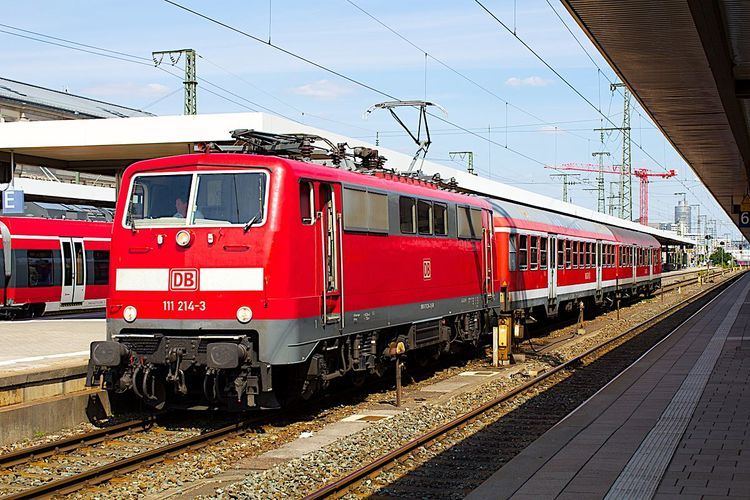Power type Electric Total produced 227 | Build date 1974–1984 UIC class Bo'Bo' | |
 | ||
Gauge 1,435 mm (4 ft 8 ⁄2 in) | ||
The Baureihe 111 is a class of electric locomotives built for the Deutsche Bundesbahn, and now owned by Deutsche Bahn AG.
Contents
History
Class 111 is the successor of the Class 110 express Einheitslokomotive. Since demand for fast electric locomotives was high even after production of the 110 ended, the Deutsche Bundesbahn decided to commission a new batch in the 1970s. The bogies were replaced with a different type, significantly improving the locomotive's behaviour at higher speeds. The driver's cab also was significantly improved by the DB-Einheitsführerstand (jointly developed by the Bundesbahn-Zentralamt München and Krauss-Maffei and designed under ergonomic aspects) that was first used for Class 111 locos and whose basic layout nowadays still forms part of the cab design found in many of DB's locomotives and control cars. For the first time, a digital cab car interface in addition to the then-standard conventional interface was used in new Deutsche Bundesbahn locomotives.
The first locomotive, 111 001, left the Krauss-Maffei workshop in December 1974. Up to 1984, 226 more engines were produced, not only at Krauss-Maffei but also including parts from Henschel, Krupp, Siemens, AEG and BBC.
111 227 originally was supposed to be the last newly built conventional AC locomotive of the Bundesbahn, as the Baureihe 120, using three-phase AC motors, was already being produced.). However, after the German reunification it was decided to commission another batch of the Class 112, which had been developed by the East German railways. This decision was made mainly for political purposes.
In 1979 it was decided to use the Class 111 for the S-Bahn trains of the Rhein-Ruhr S-Bahn. Hence, the engines 111 111 to 111 188 were delivered in S-Bahn colours and equipped with S-Bahn gear (destination displays, e.g.). In the same year, the Intercity was reformed under the InterCity '79 scheme and the network was enlarged. As it was foreseeable that the Class 103 engines would be stressed with that workload, the 111's licence was extended to a speed of 160 kilometres per hour (99 mph), and from May 1980 onwards, the units could be found doing InterCity services.
